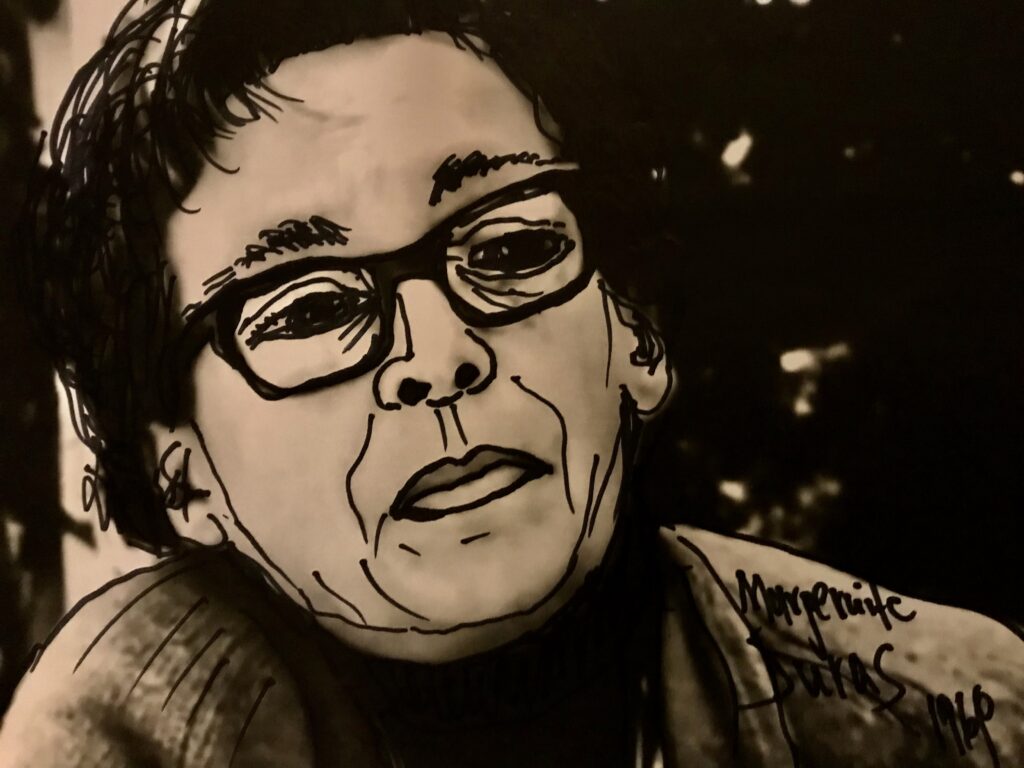Marguerite Duras-Filmstill 69 (c) kunstGarten
Literature & Film for International Women’s Day. Irmi Horn remembers the great woman of letters.
FEMBIO writes:
This is how posterity will remember her: Wearing a rosewood-colored man’s hat, a dress of faded raw silk, high-heeled gold lame shoes on her feet, and her mouth made up deep red, the 15-year-old schoolgirl stands on the ferry crossing the Mekong River and sees for the first time the elegant Chinese man who will become her lover.
The childhood of a poor white woman in colonial Indochina, the struggles for survival of her mother, a widowed elementary school teacher, her hatred of her older, drug-addicted brother and her incestuous love for the younger brother, her admiration for the beautiful wife of the governor general (Anne-Marie Stretter) – all these memories run through Marguerite Duras’s work like a leitmotif.
But it was the story of the Chinese lover, which she wrote down when she was 70 years old, that made the avant-garde writer with the strangely floating style of writing a world-famous best-selling author. The novel, awarded the Prix Goncourt, sold 2.3 million copies, and the film, directed by Jean-Jacques Annaud in 1992, was a similar success.
Marguerite DurasAs an 18-year-old, Duras came to Paris in 1932, studied mathematics, law and politics, married a fellow student, Robert Antelme, two years later, suffered a stillbirth, took part in the Resistance in the circle around François Mitterrand. In 1944 Robert Antelme was arrested and deported by the Germans.
After the war, Duras briefly joined the Communist Party, had her long-awaited son by Dionys Mascolo, and wrote like a woman possessed – novels, plays, screenplays (including for Alain Resnais’ film Hiroshima mon amour). In 1966 she began to make her own films, which, with their reduced imagery and dominant off-screen text, were as novel as her books.
In the 1970s, she moved closer to the feminist movement and almost completely banished men from her life. Her longstanding alcoholism led to repeated breakdowns; in October 198S, she fell into a coma; five months later, she awoke and almost immediately began writing again.
The 66-year-old met love once again – Yann AndrĂ©a, a 27-year-old homosexual, admirer of her literature, came and stayed, argued with her, endured her tantrums about the impossibility of this love, accompanied her writing, her alcoholic excesses, her late fame, finally her death. Her last text is entitled C’est tout – That’s All.
Marguerite Duras’ oeuvre includes 50 books and plays and about 20 of her own films.
Der Mann im Flur
L’Homme assis dans le couloir
INFORMATION
- Please make reservations not later than 2 hours before the programme begins: kunstGarten@mur.at or +43 316 262787 according to the Corona guidelines with a current negative test.

